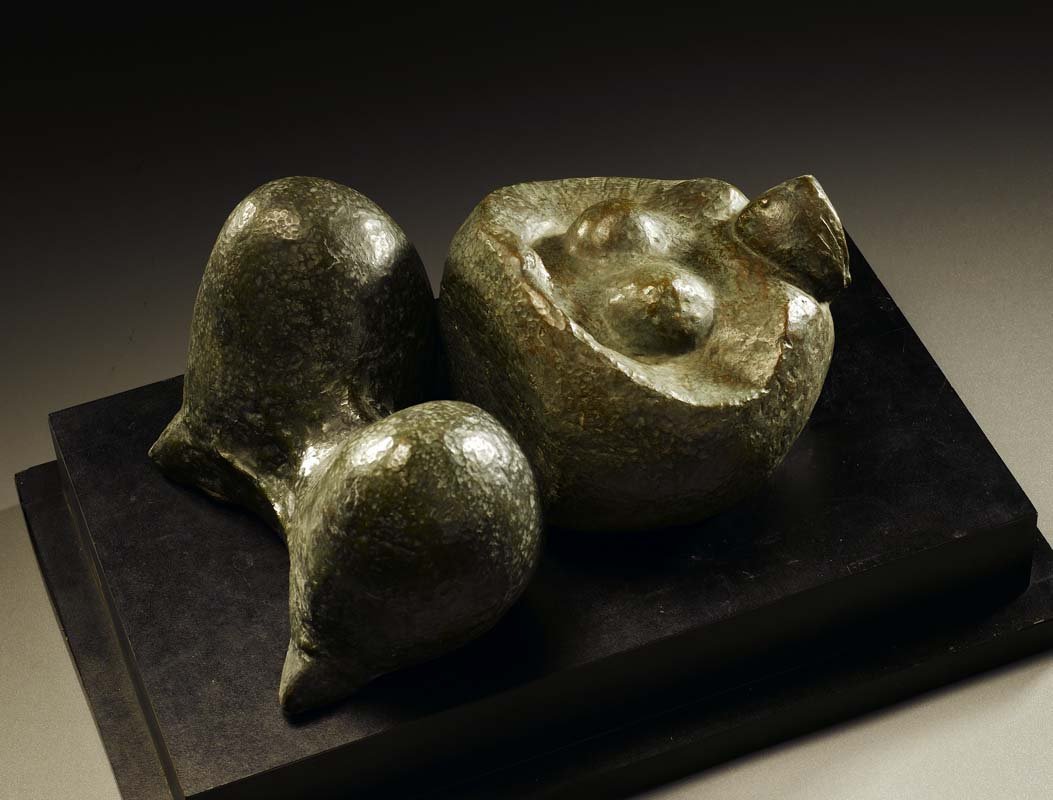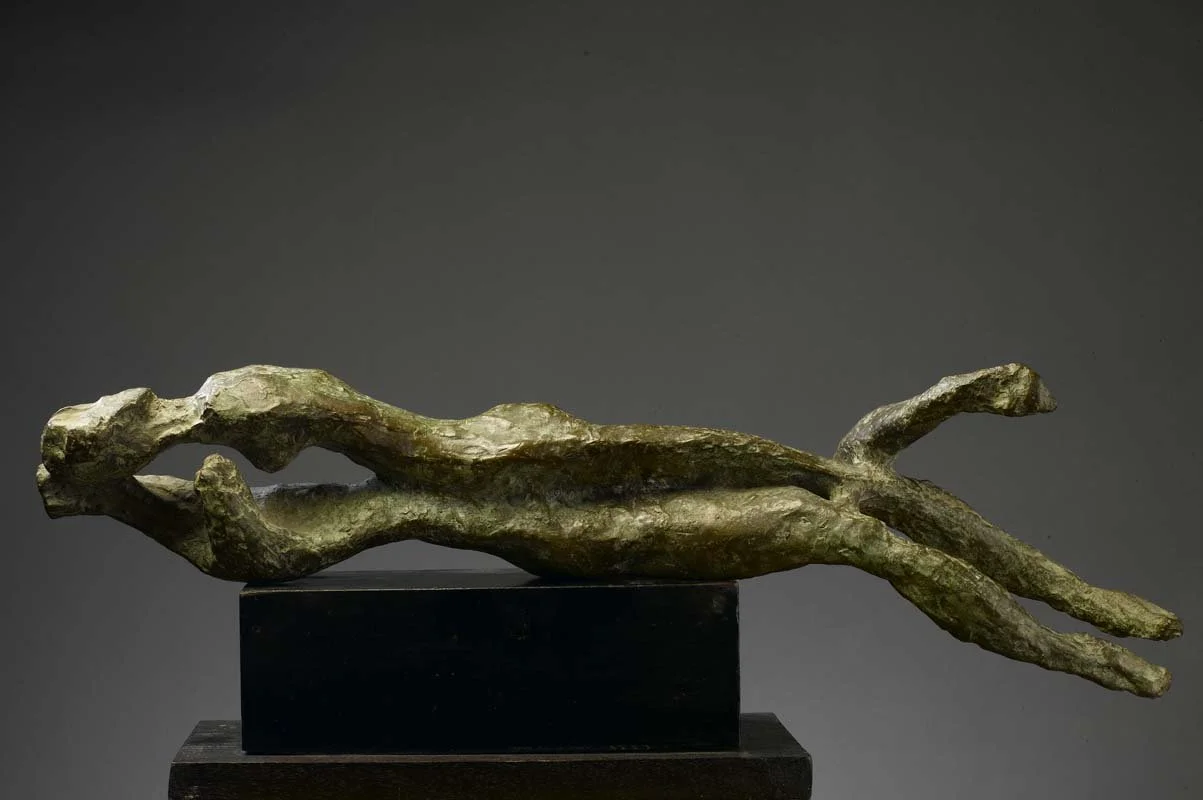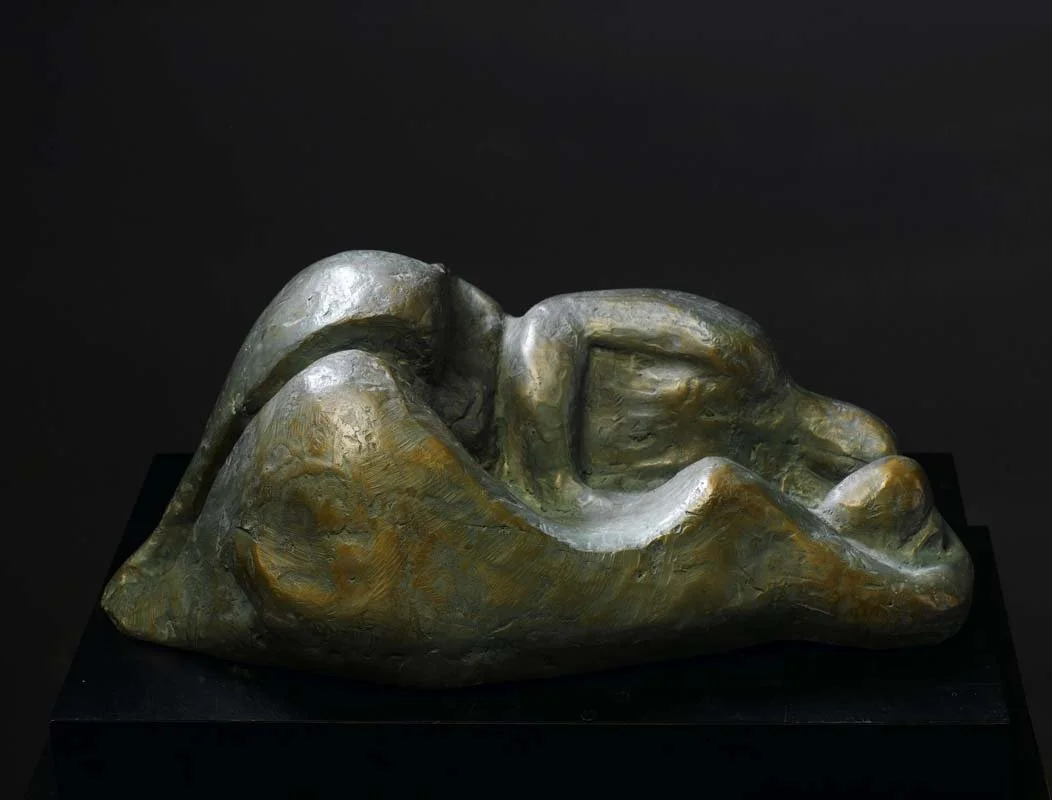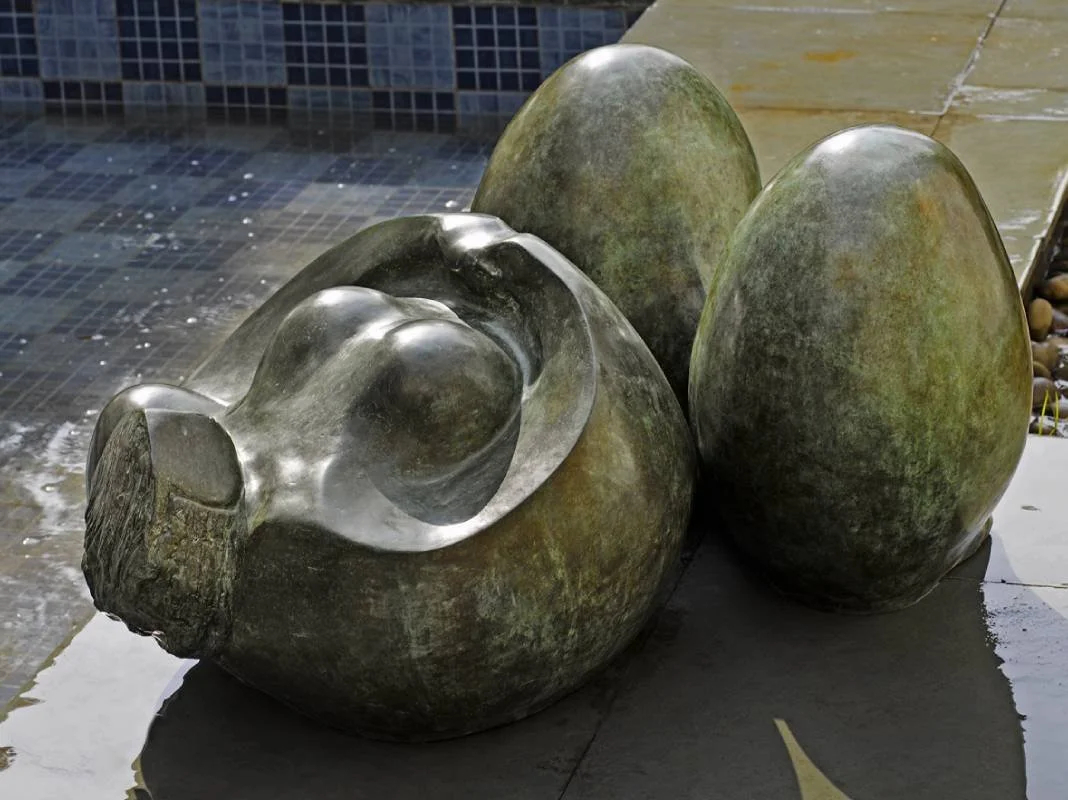
Translating Modernity by Prodosh Dasgupta
February 28 – March 28, 2020
Mapping a pedagogic journey from the Lucknow Government Arts School, followed by Madras School of Arts and Crafts, leading to the Royal College of Art in London as well as the Académie de la Grande Chaumière, Paris, can be a heady lesson. Studying bronze casting at the L. C. C. Central School, London, became an impeccable legion of sculptural practices for Das Gupta. His sculptures reflect at once, his interest in art history, his inherent perceptions, of the materiality and density of bronze to examine the role of everyday reality and the human narrative, to create contemporary moments that defined his evolution over a period of more than five decades.
In a timeline that runs the gamut of years 1947-1990, through these sculptures we glimpse an intellectual who was an inquisitor of structural form, a thinker of verbal analogies, and an aesthete who translated the rhythms of the earth in idioms that explored the resonant code of contours and benchmarks to find an alchemy that celebrated and refracted the romantic pole of his sensibility. His writings and musings on his own sculptures tell us that he took a passionate and unabashed delight in the physicality of the forms he created, as he exploited in bronze, its capacity for moodiness and melancholic beauty.
When you run your eyes over these sculptures, you know at once that it’s an odyssey that is built on the hinges of honesty and verve. Feminine fervour vies with masculine muscularity, hints of Rodin’s rudiments are as familiar as Henry Moore’s masses. But that is where the similarity stops because the works talk to us about incidents and events that happen on the firmament of Indianesque intentions. Whether it is the poise of female figures reclining in pastiche sensuality or sometimes echoing a pristine yogic poise, as in Bride, with her knees hunched, we know that Das Gupta was always interested in a language that was preoccupied by the expanded volumes of sculptural geometry that would retain its character even as he dipped into the matrix of the elemental, everyday existence.
Das Gupta was a voracious reader and an impassioned writer. He had the eye of an epicurean. Criticism in varied subjects came to him effortlessly. His reflections written over the years present the punctuations that must add to our understanding of his sojourn that strove to amalgamate all influences and finally find the stamp of a rustic rhythm. In a nation where the British had left behind their brand of academic realism, he had to forge his own identity in the alchemy of blending abstraction into the mode of naturalness. His journey to London, to the Royal College of Arts, and then to Paris, became a turning point in his vision of what sculpture could be, in the language of objectivity. One of India’s pioneering modernists, he was creating works on the cusp of a new tide. Contemporary India for him was not just a moment, instead it was a phenomenon that was defined by a summation of associations and experiences. Thus came his question many moons ago:
“What is this ‘Contemporary India’? Has it any character of its own, a definite identity to distinguish from other nations of the world? The answer to this question is obvious, in as much as its own character in faith and beliefs, its religious practices, its age-old customs and rituals, its manners and habits, and in short the way of life of its people, though apparently looks somewhat diffused in the contemporary world. The major factor that governs or moulds the character of the people in no uncertain manner is no doubt the geographical situation that is responsible for the climatic conditions. The sap of the organic life of flora and fauna gets its sustenance from this peculiar phenomenon, which is basically tropical. The basic concept remaining the same, Indian sculpture, has through the ages, entered new phases evolving new styles and forms and characters in different localities under the patronage of different kings in different periods inspired by divergent religious ideals.”
- Curated by Uma Nair
Prodosh Das Gupta (1921-1991)
Born in Dhaka, (now Bangladesh), in 1912, Prodosh graduated from Calcutta University in 1932. He studied sculpture at the Lucknow School of Arts and Crafts, 1932-33, and received Diploma in Sculpture, Government School of Art and Craft, Chennai, 1934-37. Between 1937-39, he studied sculpture at Royal Academy of Arts, London, and at the Ecole de Grande Chaumiere, Paris; and studied bronze casting at LCC Central School, London.
He also worked as a freelance sculptor, and in 1943 organised and founded the Calcutta Group of painters and sculptors. In 1950, he was appointed as the Reader and Head of Dept. of Sculpture at M. S. University, Baroda. In 1951, he was appointed Professor of Sculpture, Government College of Arts and Craft, Calcutta. In 1955, he was elected as fellow of the Royal Society of Arts, London. In 1957, he joined National Gallery of Modern Art, New Delhi as the Director. Between 1957-70, he served at the Lalit Kala Akademi in its General Council and Executive Board.
In 1960, Prodosh was elected president of the Third International Association of Arts (UNESCO) Congress, Vienna, and functioned as an executive board member for three years. He travelled to Czechoslovakia, Poland and East Germany on the invitation of the respective governments to meet artists, and visit galleries and museums in each of the countries.
In 1969, he published a book of poems – “Fallen Leaves”, and in 1970 retired from the post of Director, National Gallery of Modern Art, New Delhi. Several posthumous shows on the artist have been mounted in the recent past, including an exhibition with the Ministry of Culture at the Lalit Kala Akademi, New Delhi, Chennai, 2012; and at the Victoria Memorial Hall, Kolkata.











